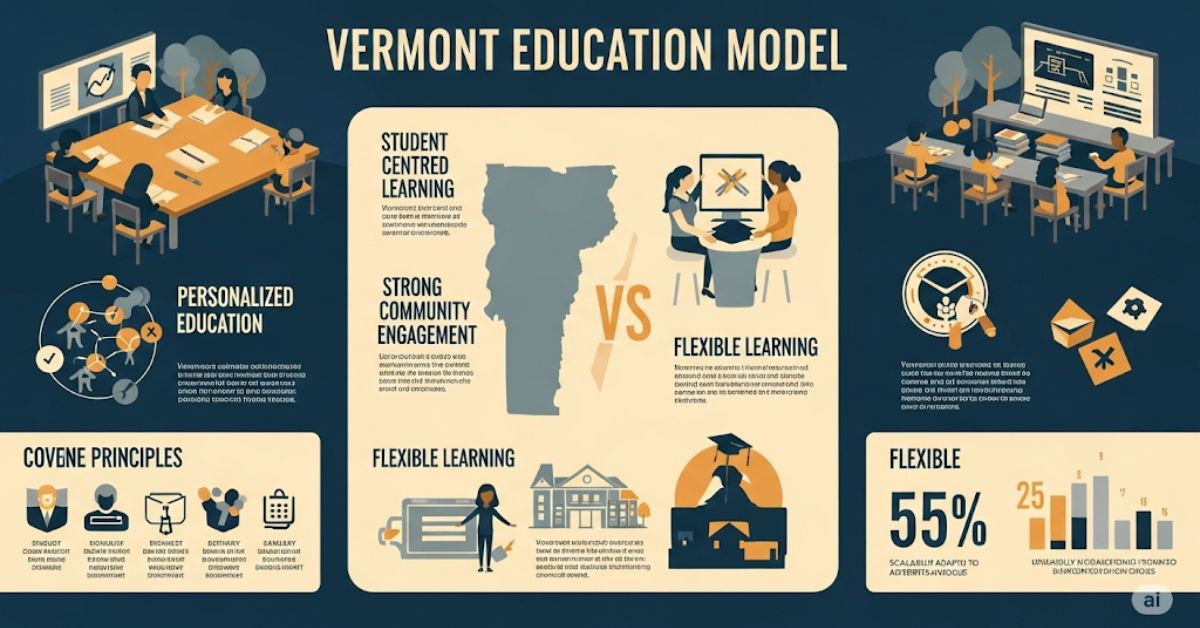In an age of fast-paced change, standardized tests, and mounting pressures on schools nationwide, a quiet educational shift is taking place — not in a massive urban district or tech-funded charter school, but in the small, scenic state of Vermont. More and more educators, researchers, and policymakers are asking: Could Vermont’s education model be the blueprint for the future of learning?
The answer might just be yes.
What Makes Vermonts Education Model So Different?
At its core, Vermonts education model centers around personalization, equity, and real-world learning. It breaks away from rigid, traditional structures and gives students and educators freedom to create, adapt, and lead.
Key elements of the model include:
- Personalized Learning Plans (PLPs) for every student
- Flexible Pathways to graduation, including dual enrollment, internships, tech education, and early college
- Competency-Based Progression, where students advance by mastering skills — not just spending time in class
- Student and Teacher Collaboration in school governance and curriculum decisions
- Focus on wellness and inclusion, not just academic performance
This model is designed for the world students actually live in — and the world they’re heading into.
Why Are Educators Nationwide Watching Vermont?
As districts across the country face student disengagement, mental health concerns, and outdated learning models, Vermont’s approach is being seen as both bold and practical.
Here’s what’s drawing attention:
- Engaged students who feel heard and motivated
- Empowered teachers with professional trust and flexibility
- Graduation pathways that prepare students for real life
- Communities that feel ownership of their schools
Rather than chase test scores, Vermont invests in relationships, relevance, and readiness — and the results are turning heads.
Is It Working? Let’s Look at the Data
| Key Area | Vermont’s Education Model | Traditional Model |
|---|---|---|
| Student Engagement | High due to voice & choice | Low, especially post-pandemic |
| Graduation Rate | Steadily rising | Flat or declining |
| Teacher Retention | Among highest in the U.S. | Dropping nationally |
| Post-Grad Success | Strong career/college outcomes | Mixed outcomes |
Even more compelling? Students in Vermont report greater confidence, mental wellness, and motivation compared to national averages.
What Does a Future-Focused Education Look Like?
The world is changing fast — AI, climate change, automation, and global interconnection are reshaping life and work. Vermont’s model isn’t just keeping up — it’s preparing students to lead.
By helping learners:
- Think critically
- Solve real problems
- Work in teams
- Communicate effectively
- Know themselves as learners and leaders
…it’s creating a generation ready for the future — not just tests.
Can Other States Adopt Vermont’s Model?
While Vermont’s small size helps it innovate quickly, the core ideas behind the model are scalable. Already, states like New Hampshire, Maine, Oregon, and parts of California are exploring or adopting similar strategies.
The key? Local flexibility + statewide vision. Vermont doesn’t hand schools a script — it gives them support to build their own solutions, with students and teachers at the center.
Final Thought: A Small State with a Big Idea
Vermont may not make national headlines often, but it’s quietly proving that human-centered, future-ready education is not just possible — it’s powerful.
As schools across the country search for something better, Vermont’s education model offers more than inspiration. It offers a blueprint — one built not on test scores or technology, but on trust, creativity, and community.








